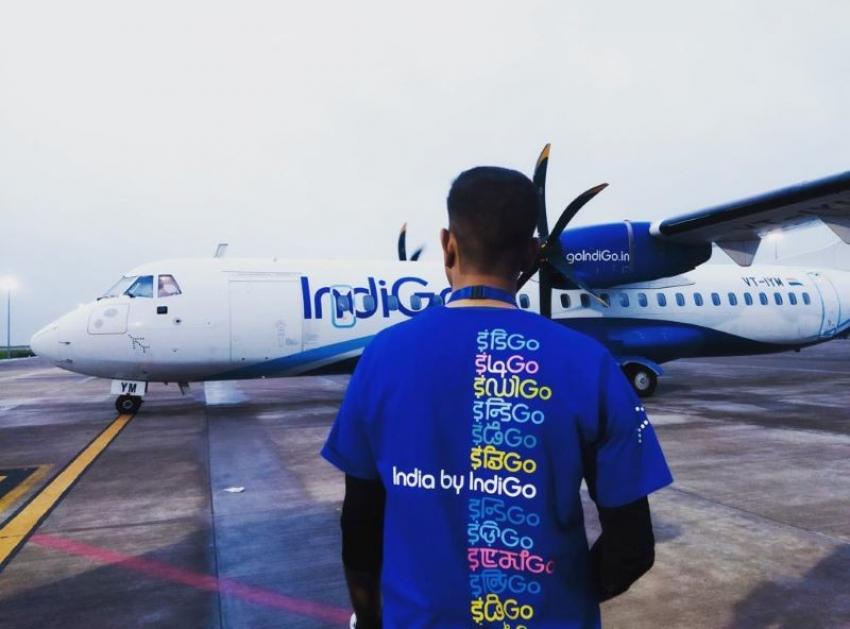By Shabarni Basu | @notintownlive | 20 May 2024, 12:42 am
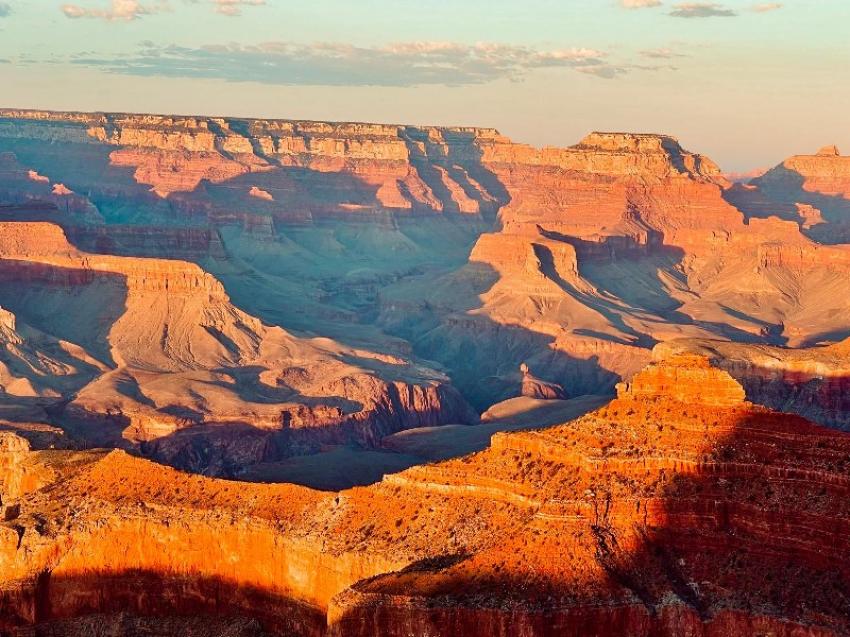
In image: A panoramic view of the Grand Canyon National Park / Photo Courtesy: Soumyadev Sarkar
While America is a lot about big cities, skyscrapers, and urban escapes, the country also anchors spectacular natural wonders and stunning landscapes. To an outsider, the United States of America is mostly about posh cities, swanky shopping outlets, culinary delights, and pretty streets. However, a vast part of America's geographic treasure is its highly acclaimed national parks and diverse terrains.
Spending three years in the Midwest and making most of the travel plans to the East Coast, as it is quite "mandatory" for Indians to visit mega cities like New York, Chicago, and Washington DC, landing on the West Coast, was a completely different experience for me. The first dominant vision that captures your eyes as you make your way to this part of the country is the endless gigantic canyons and dry mountains.
Driving on American roads towards Arizona is an out-of-the-world experience, much like a well-made 3-D American film unfolding in front of your eyes. The first surprise was unwrapped in a beautiful city called Albuquerque in New Mexico on our way to Arizona. We merely planned to rest in this city amid a mammoth drive but it turned out to be an adventure straight from the fairy tales.
Sandia Peak:
If you have a day in hand like we did, an experience of aerial tramway is the best option. Rising from the hustle and bustle of the city, the tram car, designed with hard glasses on all sides, takes you to one of America’s most stunning urban peaks. On reaching the 10,378-foot crest of the Sandia Mountains, an 11,000-square-mile panoramic view awaits.
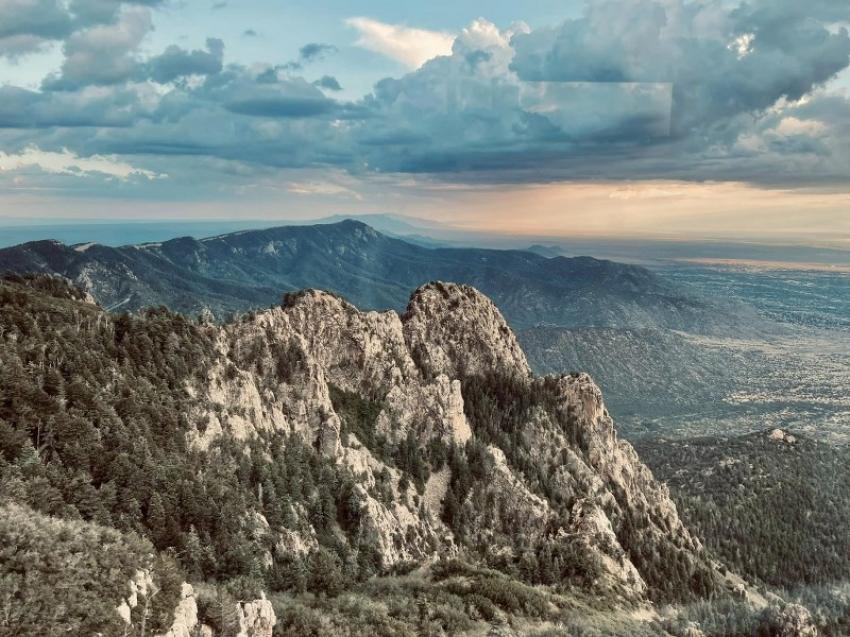
And what can I tell about the journey, the tram traverses smoothly amid the vast spread of canyons. For me, the journey was an elevation of not just the body but my mind, and soul in a mere 15 minutes.
The immersive ride offers a playful glimpse of the sun and shadows. The effects get amplified if you happen to witness the sunset (as for us) or sunrise atop the peak. As the sun goes down, the city below twinkles like stars.
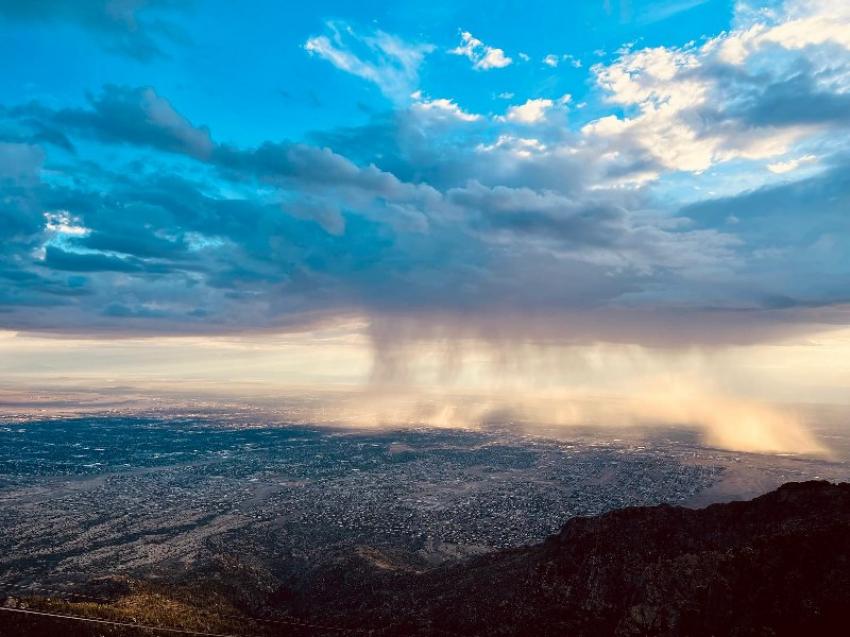
But we never forgot to stroll through the serene and aromatic fir and aspen forests. There is also a restaurant atop serving American cuisines which requires a pre-booking which I felt was the only blot in the otherwise serene environment. The other major attraction of the city is the Hot Air Balloon.
Grand Canyon:
Arizona is where my home has been for the past two years, and it is highly unlikely that you live in the Grand Canyon State (as Arizona is referred to) and not visit the colossal masterpiece, one of the world's seven natural wonders. So within a month of arriving in Arizona, we made the first travel itinerary to the Grand Canyon National Park which is a drivable distance of four hours from its capital Phoenix, where we are based.
The Grand Canyon is truly a majestic wonder that has been carved and shaped by the Colorado River. It stands as a testament to the Earth’s geological history. Spanning over 277 miles and reaching depths of over a mile, this colossal chasm showcases layers of rock that unveil millions of years of natural artistry.
On my first encounter with the Grand Canyon, I was left in awe of a massive natural architecture painted in pink, orange, yellow, and red with the Colorado River flowing as a deep blue stream beneath. I bet on my little accumulated travel treasure that it is impossible to take your eyes off the breathtaking panorama of vibrant hues, from the rich reds of the Kaibab Limestone to the deep purples of the Bright Angel Shale.
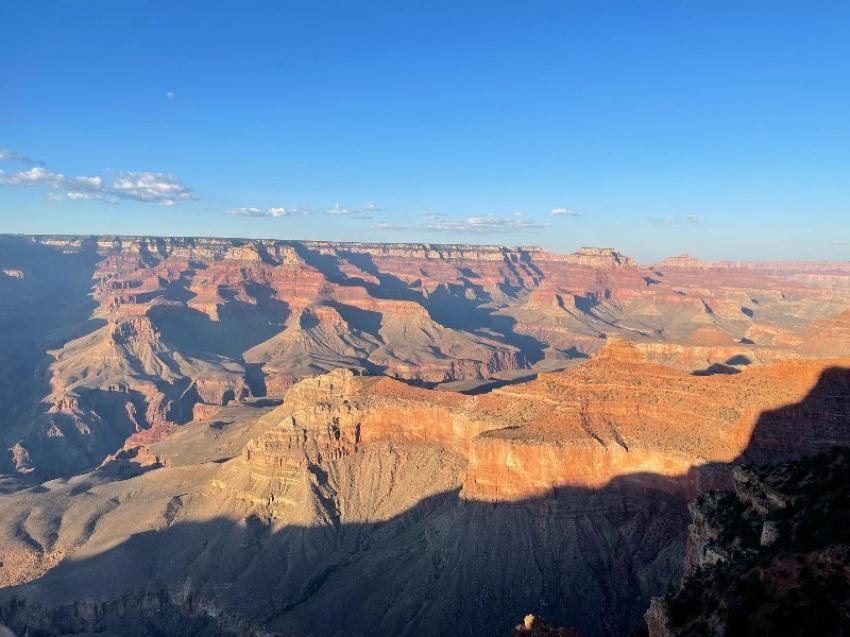
Its sheer cliffs and intricate formations narrate a compelling story of erosion and the enduring forces that shaped this iconic landscape. Nearly two billion years of Earth's geological history have been exposed as the Colorado River and its tributaries cut their channels through layer after layer of rock while the Colorado Plateau was uplifted.
The canyon and adjacent rim are contained within the Grand Canyon National Park, the Kaibab National Forest, the Grand Canyon–Parashant National Monument, the Hualapai Indian Reservation, the Havasupai Indian Reservation, and the Navajo Nation.
Visitors to the Grand Canyon are greeted by awe-inspiring vistas at every turn. We explored the South Rim standing at an elevation of about 7,000 feet, also the most visited section offering panoramic views of the canyon’s vast expanse. The North Rim provides a more secluded and forested experience. The Grand Canyon is not merely a spectacle to observe; it beckons adventurers to explore its hiking trails, embark on river rafting expeditions, and stargaze under its clear desert skies.
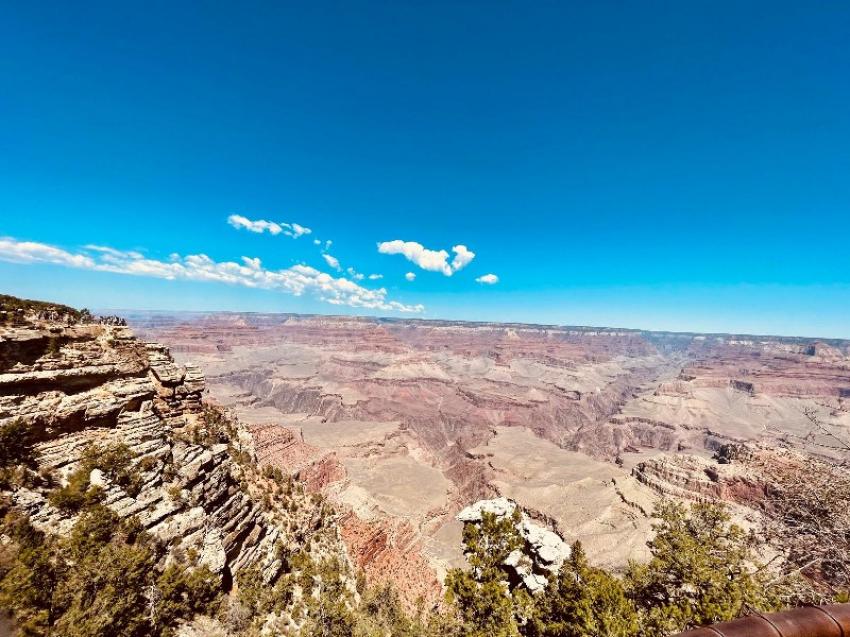
Whether marveling at sunrise casting shadows on the canyon walls or witnessing the vibrant colors of sunset, the Grand Canyon entices spectators with the immense beauty sculpted by time and the elements. Being a witness to the sunset was a spectacle beyond earthly delights.
The South Rim of the Grand Canyon offers free shuttle rides to take you inside the park restricted to private cars. The shuttle operates on different routes allowing visitors to hop on and off any place they desire to explore in depth or at hiking start points.
I was especially drawn by the spectacular views at most of the vantage points along the shuttle's red route leading up to the Hermit's Point which is closed to private vehicles except for winters.
The overlook along the route contributes heavily to witnessing the park's geology, wildlife, and colourful landscape. As you travel deeper into the park, the Colorado River becomes wider in a camouflage of bluish-green shade. You might even spot an elk on your way.
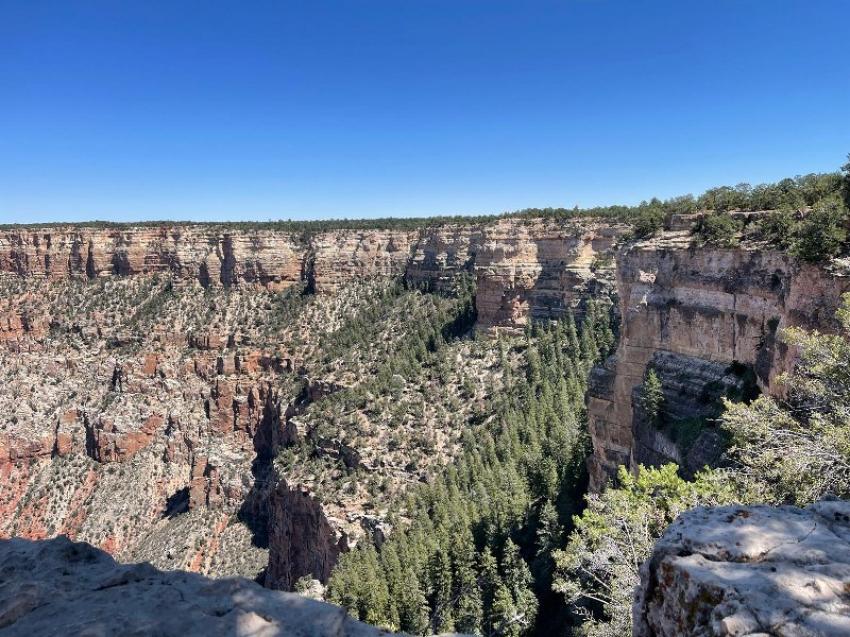
The canyon’s depth is equally awe-inspiring, plunging over a mile down to its deepest point with color shades ranging from the reds of the upper layers to the muted tones deeper within. Each rock layer, meticulously exposed over millions of years, reveals the forces of erosion that shaped this natural wonder. The vast buffet of this arid-land erosion seemed like a testament to the enduring power of geological processes, showcasing the Earth’s history etched into the very fabric of its rugged terrain.
Sedona:
Sedona is a beautifully arched stopover en route to the Grand Canyon National Park. At a drivable distance of 2 hours from Phoenix, Sedona offers an unparalleled sight comprising an array of red sandstone formations. It is a hilly retreat for Arizonians and a great escape destination. The city offers a much cooler experience from the surrounding desert temperatures and hence became a favourite weekend attraction.
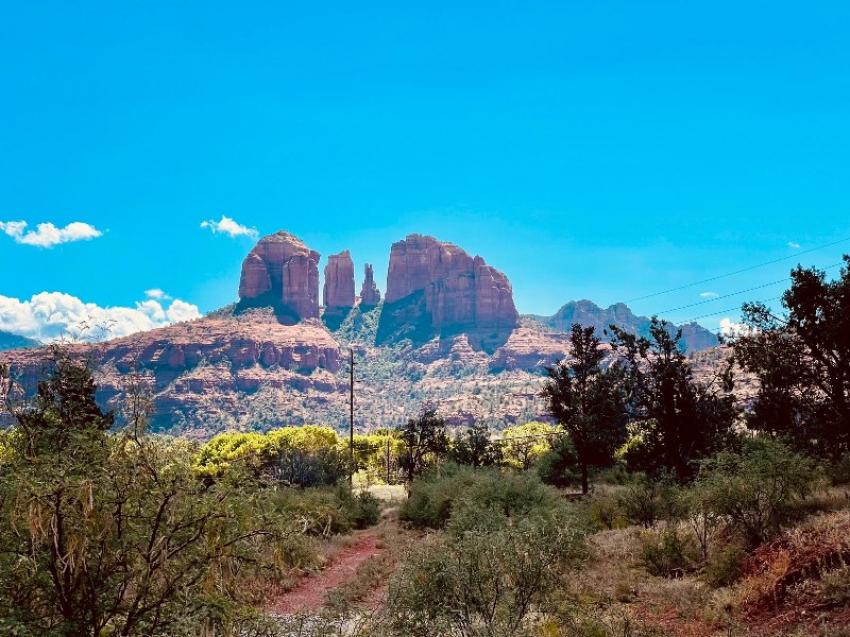
Beaming in brilliant orange and red when illuminated by the rising or setting sun, the red rocks form a popular backdrop for many activities, ranging from spiritual pursuits to the hundreds of hiking and mountain biking trails. The Cathedral Rock offers a perfect photo opportunity for travelers.
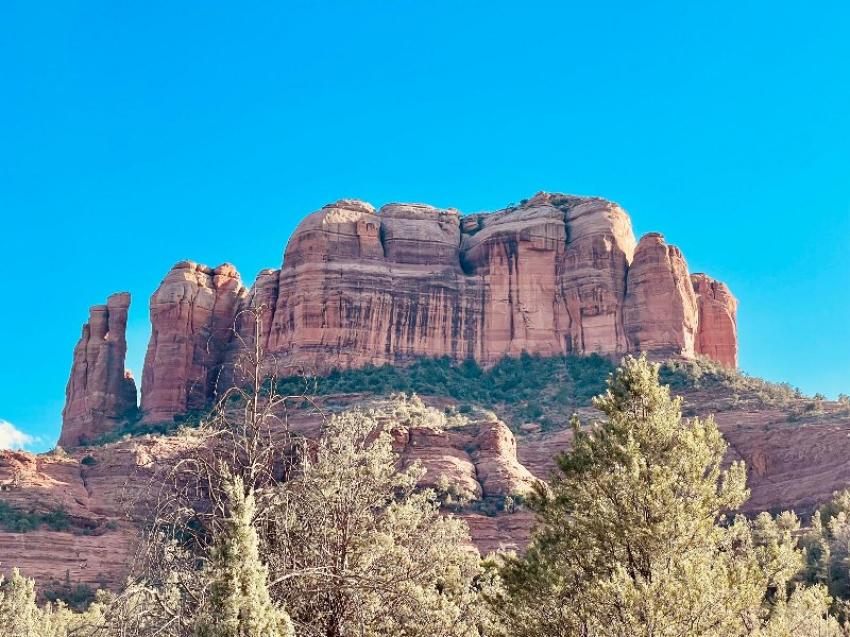
Sedona is also the home to the nationally recognized McDonald's with turquoise arches, instead of the traditional Golden Arches. It was named after Sedona Schnebly whose husband, Theodore Carlton Schnebly, was the city's first postmaster. She was celebrated for her hospitality and industriousness.
While plenty of day tours are available, we chose to spend a couple of days basking in the serenity of this small town with our Airbnb situated right on top of a mountain with dazzling views. The top attractions of Sedona are the Red Rock Jeep Tours, Red Rock Slide State Park, and Chapel of the Holy Cross among others.
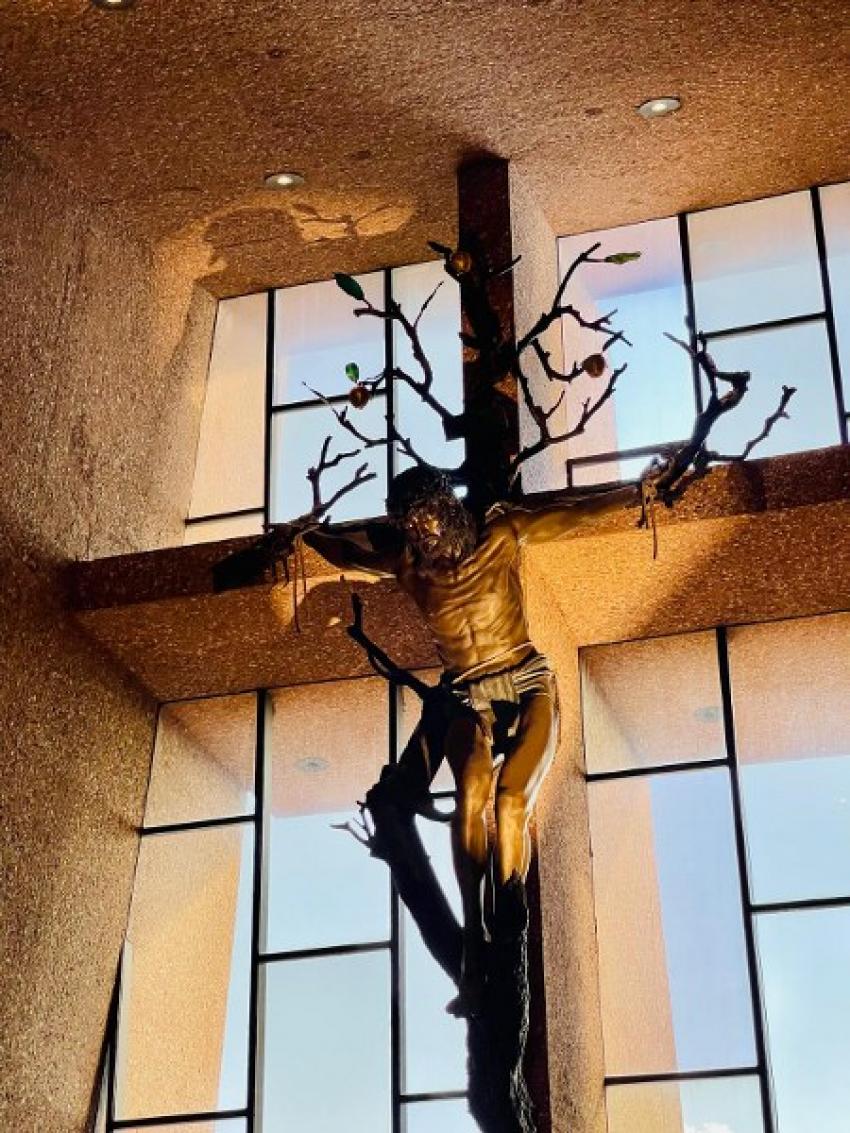
Antelope Canyon:
Even though the Grand Canyon National Park is the most attractive tourist getaway in Arizona, in my view, the Antelope Canyon in Page exceeds all expectations one could have of nature's creativity. Also known as “the place where water runs through rocks,” the Canyon is much like caves and offers magnificent beauty and a unique geological format.
Located at a drivable distance of 2.5 hours from the Grand Canyon National Park, the Antelope Canyon is only accessible via guided tours, and mind you the slots get booked some 5-6 months prior.
The Antelope Canyon is a slot canyon maintained by the Navajo Nation. It includes six separate, scenic slot canyon sections on the Navajo Reservation, referred to as Upper Antelope Canyon (or The Crack), Rattle Snake Canyon, Owl Canyon, Mountain Sheep Canyon, Canyon X and Lower Antelope Canyon (or The Corkscrew). It is the primary attraction of Lake Powell Navajo Tribal Park besides a hiking trail to Rainbow Bridge National Monument.
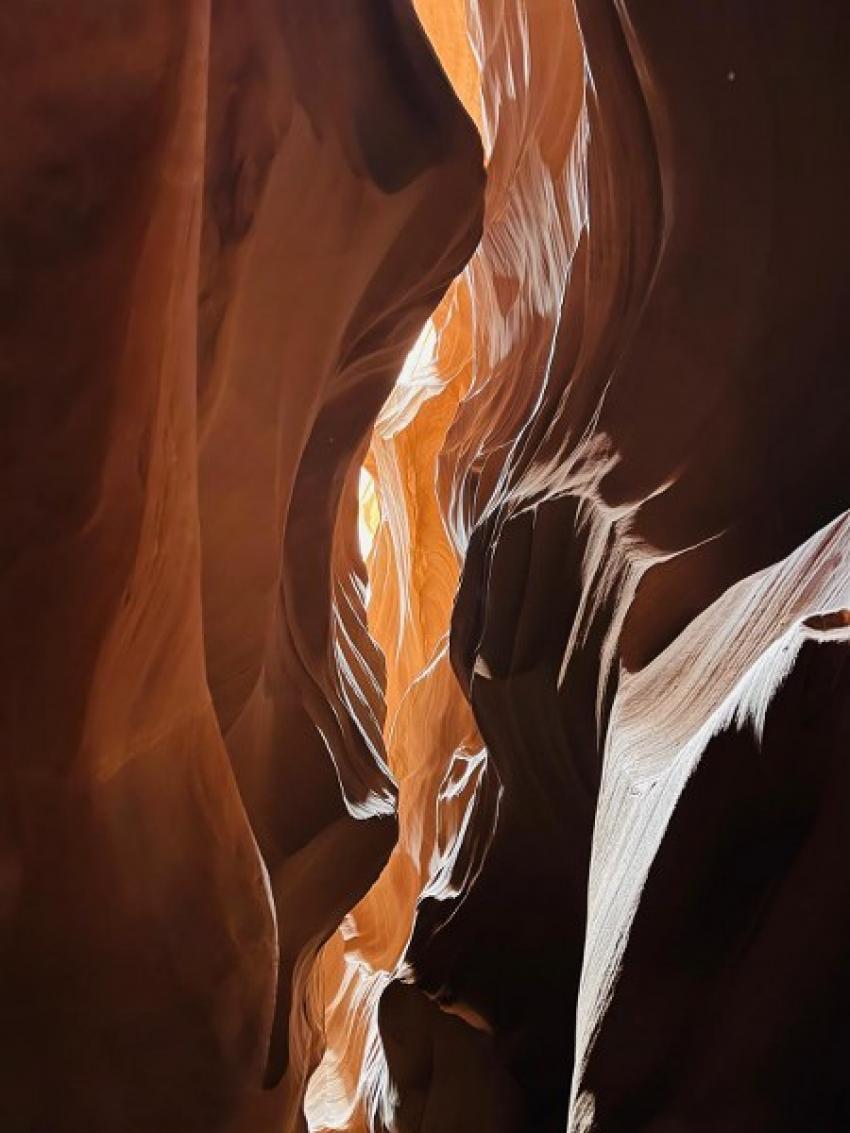
As I embarked on the jeep to the most popular tour site Upper Antelope, it seemed that I landed straight on the sets of the Hollywood movie 'Dune' with only the red sand in sight as far as my eyes could traverse.
The Navajo name for Upper Antelope Canyon is Tse bighanilini, which means 'the place where water runs through the rocks'. Rainwater, especially during monsoon season, runs into the extensive basin above the slot canyon sections, picking up speed and sand as it rushes into the narrow passageways. Over time the passageways eroded, leaving the corridors deep and smoothing hard edges to form characteristic "flowing" shapes

Antelope Canyon was opened for sightseers in 1997 after it was first accessed by Pearl Begay Family in 1983. It has been serving as a source of tourism for the native Navajo tribe. According to our guide, who was also a local, the canyon served as their ancestor's shelter. The Navajo people consider Antelope Canyon a sacred site with deep religious significance. Entering the Canyon is akin to entering a cathedral for them. To the natives, it signifies Mother Nature’s gifts and power and is blessed every four years when the Navajo give thanks to the natural elements that shaped its wondrous beauty.
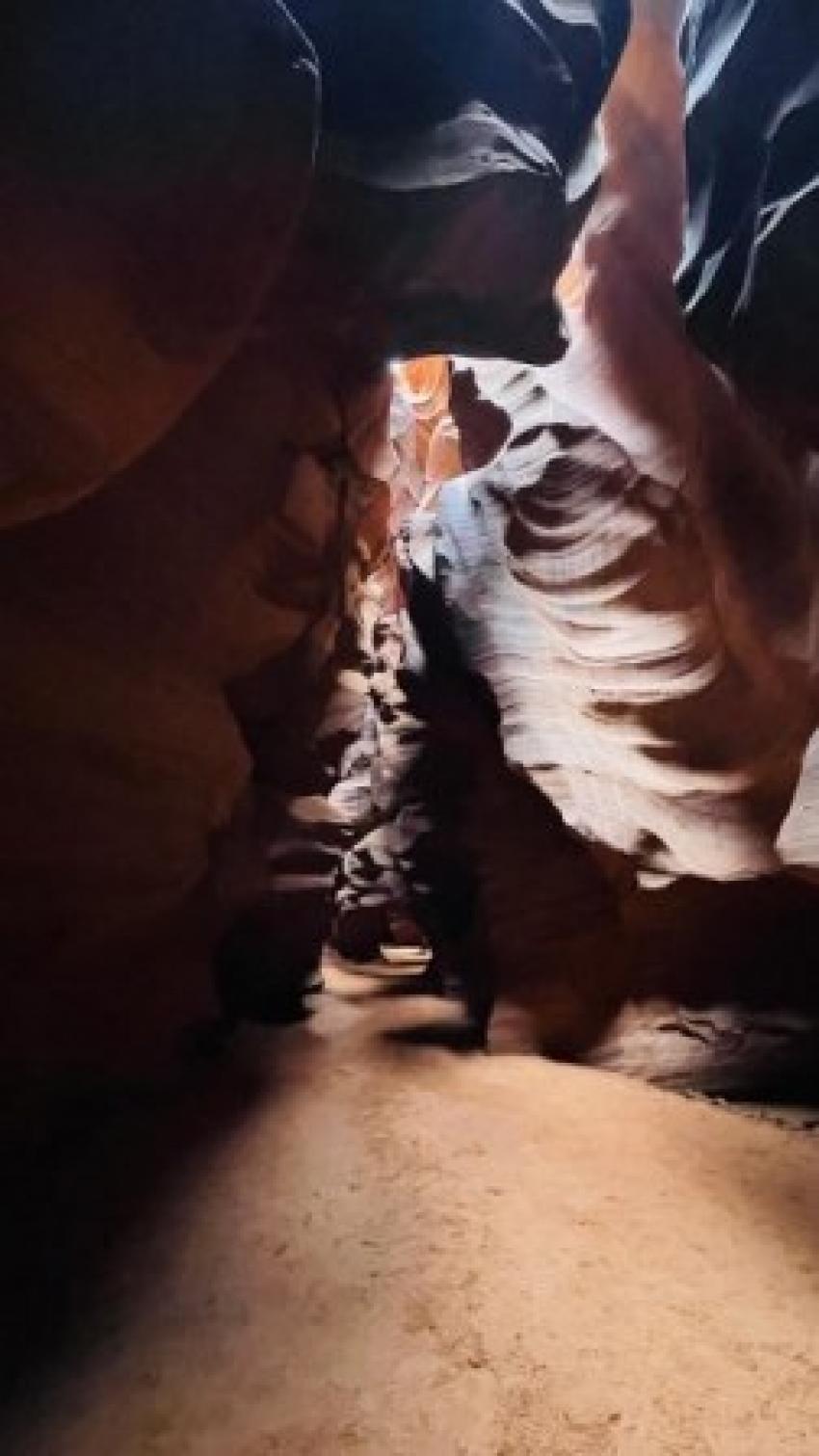
The Antelope Canyon has four sightseeing tours daily with afternoon slots being the most sought-after. The tour has to be taken on foot. As I entered the Upper Antelope, almost like a huge cave, I was blown over by the beams of direct sunlight radiating down from openings at the top of the canyon. These sunlight rays create a wonderland of hues and quite expectantly provide a great photographic expedition. While no selfie sticks are allowed, the guides have essayed the art of photography and know exactly where to click the perfect shot.
As our guide took us through the tour, I kept wondering about nature's colour palate and the brilliant positioning of the openings atop, allowing the right amount of sunlight to create an aurora-like effect. Even the walk outside the canyon amid the red sand seemed a joyride to me and jeep tours were likened to safari drives in the desert.
The Lower Antelope Canyon, called Hazdistazi, or 'spiral rock arches' by the Navajo, is situated several miles below the Upper Antelope Canyon. Before the installation of metal stairways, visiting the canyon required climbing pre-installed ladders in certain areas and is still considered difficult to hike.
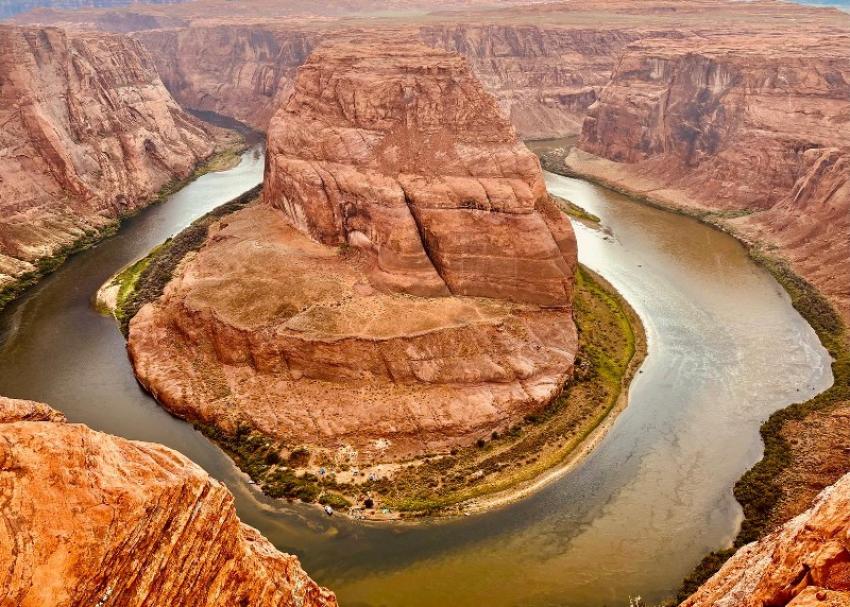
Horseshoe Bend:
Well, I read about the existence of Horseshoe Bend in Geography textbooks but witnessing it live felt surreal. Located 30 minutes away from the Antelope Canyon, the Horseshoe Bend is considered a must for travellers' bucket lists in the US. After a 30-minute hike from the parking spot, my eyes met the sandstone meander carved by the beautiful Colorado River which aptly suits the name.
Horseshoe Bend, as the name suggests, is a horseshoe-shaped incised meander of the Colorado River near Page in Arizona. It is also referred to as the "east rim of the Grand Canyon."
The hike to the overlook is a 2.4 km round-trip over a hardened path and oh boy it paid off the moment I looked at the natural wonder on a sunny afternoon. While quite in sync with the red landscape throughout Arizona, the Colorado River making a wide sweep around a sandstone escarpment is a spectacle I only imagined existed in wallpapers.
Horseshoe Bend can be viewed from a cliff above with the overlook at 4,200 feet (1,300 m) above sea level while the Colorado River is at 3,200 feet (1,000 m) above sea level, making it a 1,000-foot (300 m) drop.
The entrenched meander, a perfect example for Geography lovers, was carved by River Colorado on its long downward journey to the sea, sometimes making wide bends, but always seeking the path of least resistance. Around 5 million years ago, the Colorado Plateau uplifted and the meandering rivers that crossed the ancient landscape were trapped in their beds. Over time, the rivers cut through the uplifted layers of sandstone.
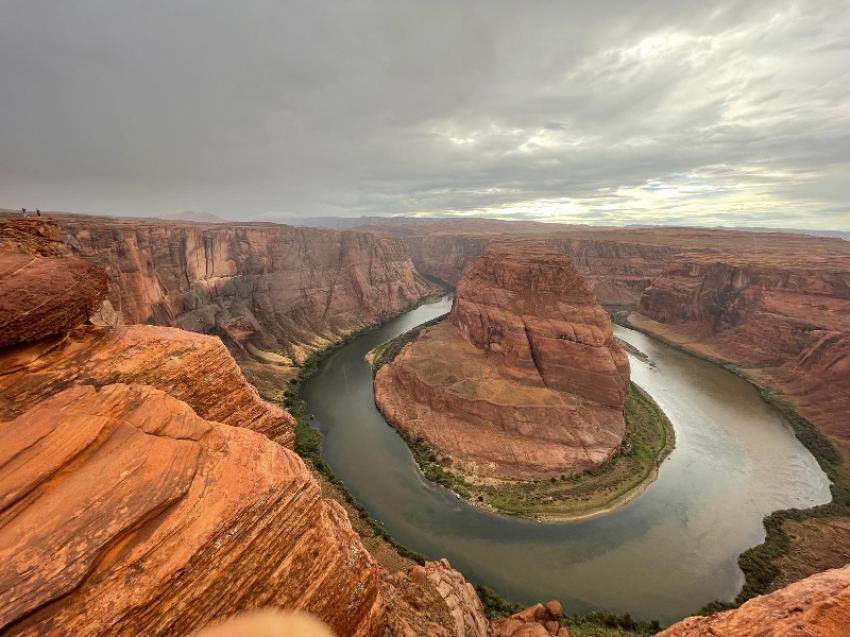
Covering the Grand Canyon, the Antelope Canyon, and the Horseshoe Bend in this life was a spiritual retreat for me leaving a wide spectrum of memories that would be etched in my mind forever. Even as we took some hundred snaps of each site, I would be tempted to believe that none would do justice to what my eyes embraced and the lasting effect all these rugged structures had on my soul. Arizona, a desert in the Southwestern region of the US, uncontestedly offers the most varied natural extravaganzas and prehistoric treasures besides its diverse cactus collections.
(Images by Soumyadev Sarkar)
- From Kennedy’s Proposal to 1850s Saloons: The Three Historic D.C. Restaurants Everyone Must Try
- This city has the best bagel in the US, and it’s not New York!
- I escaped to Pachmarhi — what I found in the queen of Satpura left me spellbound
- Air Canada just ranked the Best New Restaurants of 2025 - And the Top Spot isn't who you think
- Rediscovering Arunachal's Monpa Cuisine: One Woman’s Millet Momo Revolution
- Discovering Heritage: A visual journey through Odisha crafts museum Kalabhoomi
- From kebabs to biriyani: Lucknow gets UNESCO honour for its royal cuisine
- Delta takes Spanish flavours to the skies
- Kolkata’s iconic Kathi Roll among world’s top 10 wraps: TasteAtlas
- Yellow Taxis and the Colours of Puja
Air Canada has introduced a new non-stop route connecting Toronto with Rio de Janeiro, with the first flight landing in the Brazilian city on Friday morning.
Air India, India’s leading global airline, and Maldivian, the national airline of the Maldives, have entered a bilateral interline partnership aimed at boosting connectivity between the two countries.
IndiGo, India’s largest airline, is grappling with one of its most severe operational crises in recent years, with widespread flight delays and cancellations disrupting travel across the country for a second consecutive day.





